In today's digital age, a website is often the first point of contact between a business and its customers. Whether you're running an eCommerce site, a personal blog, or a corporate website, the design and functionality of your site play a critical role in user engagement, conversion rate, and overall success. Based on our own experience of building websites over the last 25 years, we will explore why good website design is important and share 15 top tips on how to build an effective and user-friendly website.
Why is Good Website Design Important?
Good website design is essential because it influences how visitors perceive and interact with your brand, directly impacting your credibility, engagement, and conversions. Your website often serves as the first impression of your business, and a modern, user-friendly design establishes trust and professionalism while encouraging visitors to explore further.
A well-designed site enhances user experience by ensuring intuitive navigation, fast load times, and mobile responsiveness, which are crucial as mobile devices now dominate web traffic. Effective design also aligns with your brand identity, creating consistency and fostering recognition. Beyond aesthetics, good design supports functionality and search engine optimisation (SEO), improving your site's visibility and accessibility. It helps communicate your value proposition clearly and strategically positions calls-to-action to drive conversions.
By investing in good design, you not only stand out from competitors but also build a reliable foundation for long-term success, avoiding costly redesigns or lost opportunities caused by a poor user experience.
If you have a well-designed website, you can expect an improvement in consumer time spent on site up to 84% and year-over-year online revenue by 132% (Source: Madebyshape.co.uk)
Website design is not just about aesthetics—it's about creating an intuitive, seamless experience for your users while achieving your business goals.
Here are some key reasons why good website design is essential:
First Impressions Matter
First impressions matter significantly when it comes to websites because your site is often the first interaction a potential customer has with your brand. A well-designed website creates an immediate sense of trust, professionalism, and credibility, setting the tone for the rest of the user’s experience. Visitors quickly form opinions based on visual appeal, layout, and usability, and if the design feels outdated, cluttered, or difficult to navigate, they may leave without exploring further.
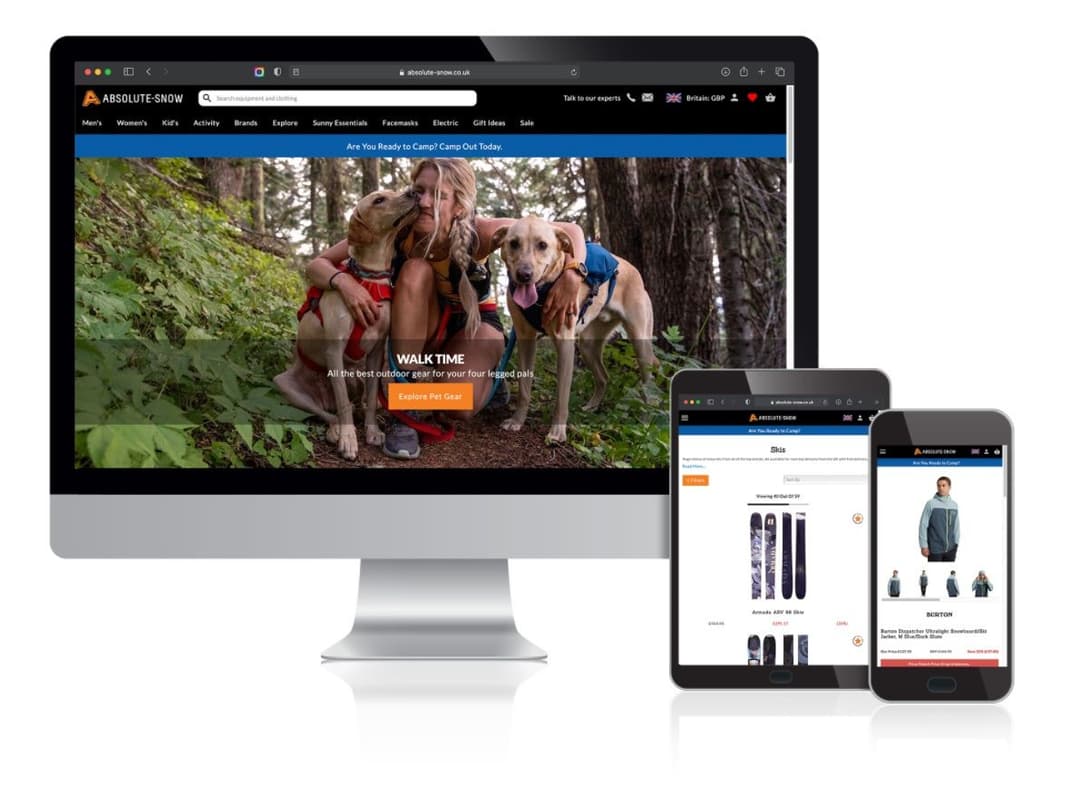
On the other hand, a polished, user-friendly design signals that your business is modern, reliable, and attentive to detail, encouraging users to stay, engage, and ultimately take action.
Your website is often the first interaction potential customers have with your brand. A well-designed website creates a positive first impression, builds trust, and makes visitors want to stay longer. Poor design, on the other hand, can lead to high bounce rates and lost opportunities.
User Experience (UX) and Usability
User Experience (UX) refers to the overall feeling and satisfaction a user has when interacting with a website or digital product. It encompasses all aspects of the user's journey, from navigation and accessibility to visual design and emotional impact. Usability, a key component of UX, focuses on how easy and efficient it is for users to achieve their goals on a site. A usable website ensures intuitive navigation, clear organisation, and minimal frustration, allowing visitors to complete tasks seamlessly. Together, UX and usability aim to create a positive, engaging, and productive experience that meets the needs of both the user and the business.
A good website is easy to navigate, loads quickly, and offers a clear path for visitors to find what they need. If your website is confusing or difficult to use, visitors will likely leave and turn to competitors.
Mobile Compatibility
Mobile compatibility is critical for modern websites, as mobile devices now dominate global internet traffic.
As of October 2024, over 60% of world wide web traffic originates from mobile devices, marking a significant shift from less than 11% in 2012.
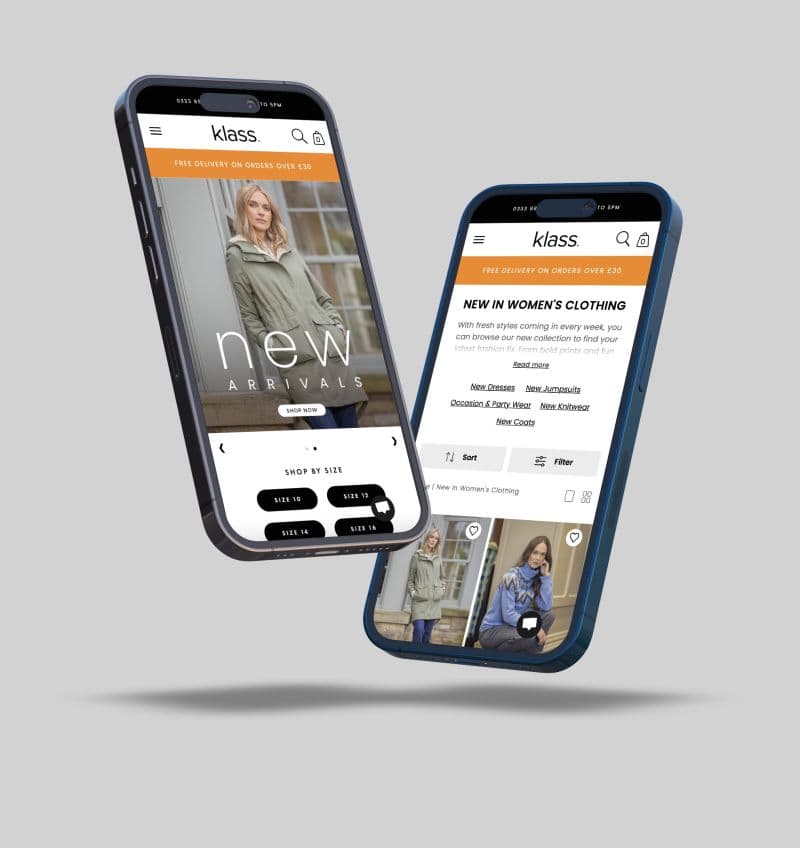
In some regions, such as Africa and Asia, mobile traffic exceeds 69%, while North America sees nearly 48% of its web activity from mobile users. Additionally, 92.3% of internet users globally access the internet via mobile phones, reflecting their central role in connectivity and eCommerce. Websites not optimized for mobile risk alienating these users, leading to lower engagement and potential revenue loss
In December 2023, 47.17% of website page views in the UK came from mobile phones, compared to 48.62% from laptops and desktops (Source: Statistica).
With the increasing use of smartphones and tablets, your website must be mobile-responsive. A good website design ensures your site looks great and functions properly across all devices, improving accessibility and user experience.
SEO Benefits
SEO (Search Engine Optimisation) is essential for websites because it drives visibility, organic traffic, and conversions, which are critical for online success.
In 2024, mobile traffic accounts for over 60% of global web activity, meaning that optimising websites for mobile SEO is no longer optional but imperative.
Google’s mobile-first indexing prioritises mobile-friendly sites in search rankings, ensuring they are more likely to appear in search results when users query from their phones. Additionally, websites ranking on the first page of search results capture 90% of all clicks, emphasising the importance of effective SEO strategies. For mobile users, features like fast-loading pages, intuitive design, and localised search optimisation further boost engagement and visibility, helping businesses capitalise on the growing dominance of mobile traffic.
Search engines prioritise well-structured, fast-loading, and mobile-friendly websites. Good website design can improve your search engine ranking, driving more organic traffic to your site.
Builds Trust and Credibility
Building trust and credibility through a well-designed website is crucial for attracting and retaining users.
Research shows that 94% of first impressions about a site are based on its visual appeal and design, with nearly 93% of users considering visuals a key factor in decision-making.
A professional, user-friendly website fosters confidence, while cluttered or outdated designs can cause visitors to leave within seconds. Transparency also plays a significant role - clear information about business practices, easy-to-find contact details, and visible security measures enhance trust. Social proof, such as reviews and endorsements, further reassures users, as 88% of people trust online reviews as much as personal recommendations.
A professional, well-designed website enhances your brand’s credibility. Websites that appear outdated, cluttered, or difficult to navigate can raise doubts about the legitimacy of your business.
Conversion Optimisation
Conversion optimisation is crucial for maximising the value of your website traffic, turning visitors into leads or customers.
On average, website conversion rates across industries range from 2% to 5%, in some categories (like fashion), they often sit between 1.5% and 2%.
Every second of delay in page load time can reduce conversions by up to 20%, highlighting the importance of performance. Furthermore, strategic measures like reducing form fields from 11 to 4 can boost conversions by 120%. Companies investing in dedicated landing pages for campaigns see up to 55% more leads, while videos on landing pages can improve conversions by 86%.
A good website is designed with the goal of converting visitors into customers or leads. Whether it’s through clear calls to action (CTAs), optimised landing pages, or easy-to-complete forms, an effective website is focused on driving conversions.
15 Top Tips on How to Build a Good Website
Once you have picked the right website design agency to take you forward then here are our universal (suitable for all types of websites) top tips to follow:
1. Define Your Goals and Target Audience
Before you start building your website, it’s crucial to define the purpose of your site and identify your target audience. Are you selling products, offering services, or sharing content? Understanding your goals will guide the design process and ensure your website serves its intended purpose.
2. Focus on Clean and Simple Design
A cluttered, overly complicated website can overwhelm visitors and make navigation difficult. Keep your design clean and simple, using whitespace to improve readability. Stick to a consistent colour scheme and font choices to create a cohesive look.
On ecommerce sites complex or lengthy checkout experiences are responsible for 21% of cart abandonments. So simplifying this process for customers can really help reduce this.(Source: Madebyshape.com)
3. Prioritise Mobile Responsiveness
72% of consumers expect companies to have a mobile-ready website design (Source: Madebyshape.co.uk)
Ensure your website is mobile-friendly by using responsive design techniques. This will make sure your site looks good and functions well on smartphones and tablets, which is essential given the growing number of mobile users.
4. Use Fast Loading Times
Page speed is a critical factor for both user experience and SEO. Slow-loading websites can frustrate visitors and result in higher bounce rates. Optimise images, minimise unnecessary scripts, and use caching techniques to improve loading times.
5. Ensure Easy Navigation
A well-organised website is easy to navigate. Use a logical structure with clear, easy-to-find menus and submenus. Make sure your most important pages are accessible within a few clicks from the homepage.

6. Make Calls to Action (CTAs) Clear
Your website should have clear calls to action (CTAs) that guide visitors towards the next step. Whether it’s “Buy Now,” “Contact Us,” or “Sign Up for Newsletters,” make sure your CTAs are visible, compelling, and aligned with your business goals.
7. Use High-Quality Visuals
Images, videos, and graphics can help communicate your message and engage visitors. Always use high-quality, relevant visuals that support your content and don’t slow down your website’s loading time.
8. Incorporate SEO Best Practices
A good website is designed with search engine optimisation (SEO) in mind. Use proper heading tags (H1, H2, etc.), optimise images with alt text, and include relevant keywords in your content. SEO-friendly design can help your site rank higher on search engine results pages (SERPs).
9. Provide Valuable and Relevant Content
Content is king when it comes to user engagement. Ensure your website provides valuable, relevant, and updated content that addresses your audience's needs. This will not only keep visitors coming back, but it will also boost your SEO.
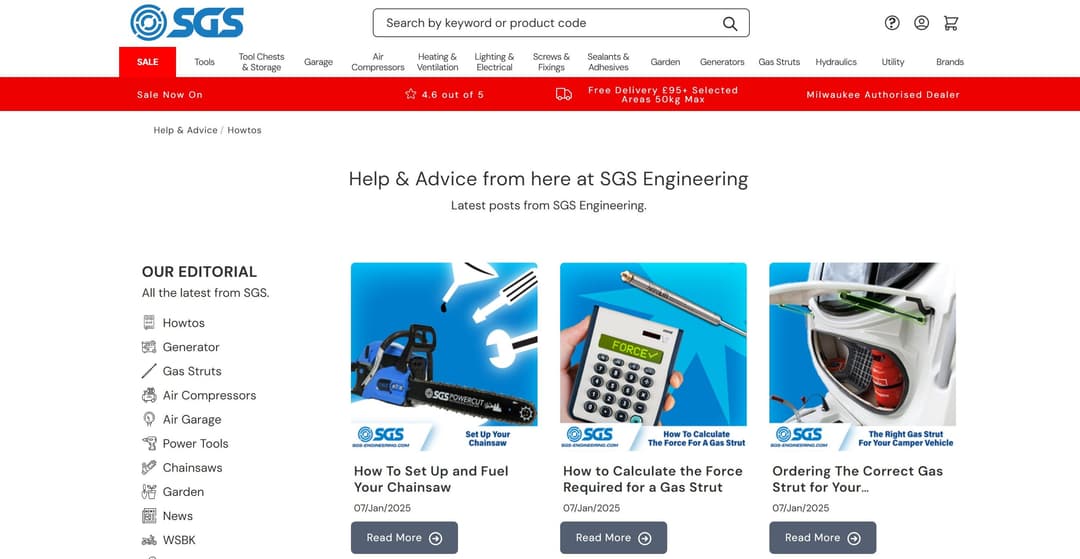
10. Ensure Security Features
Security is a priority for any website. Implement HTTPS to encrypt communication between your website and its visitors, ensuring that sensitive data is protected. Additionally, use strong password protocols and keep your website software up to date.
11. Optimise for Conversion
Your website should be designed with conversion in mind. This means placing key CTAs strategically on high-traffic pages, optimising landing pages for specific actions, and minimising distractions to increase conversion rates.
12. Test and Iterate Regularly
After launching your website, it’s important to continuously test and refine your design. Use tools like Google Analytics to monitor user behaviour, identify pain points, and test different elements (like CTAs or page layouts) to improve user experience.
13. Incorporate Social Proof
97% of people say online reviews help them decide what to buy (Source: Wisernotify.com).
Add customer testimonials, reviews, or case studies to your website. Social proof helps build credibility and trust, showing potential customers that others have had positive experiences with your business.
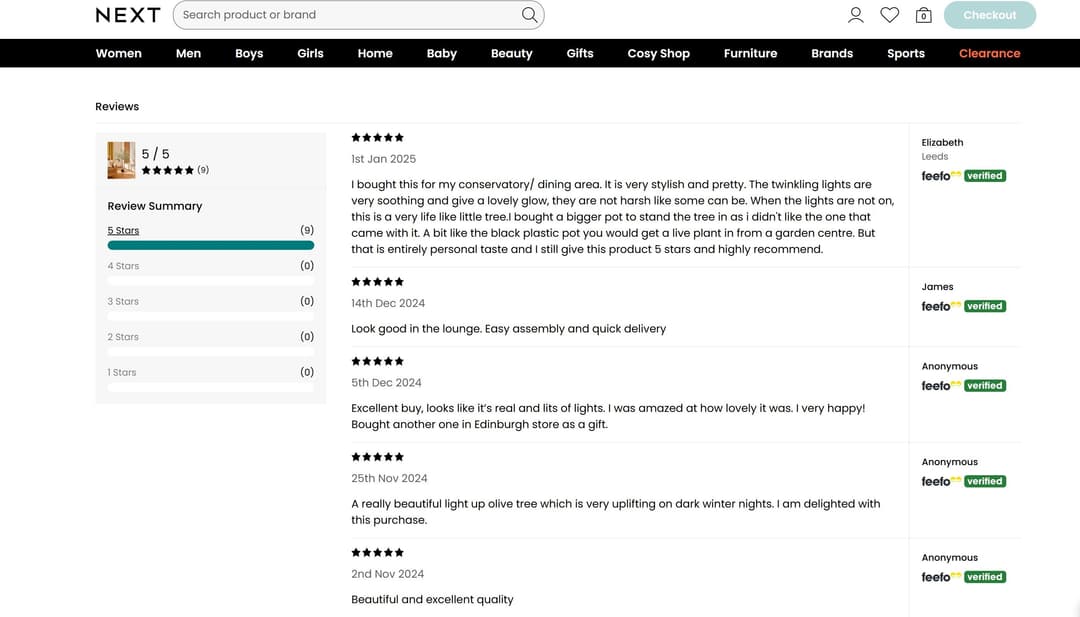
14. Use Consistent Branding
Your website should reflect your brand’s identity through its design. Use your logo, colour palette, and typography consistently across your site to reinforce brand recognition and build a professional image.
15. Make It Easy to Contact You
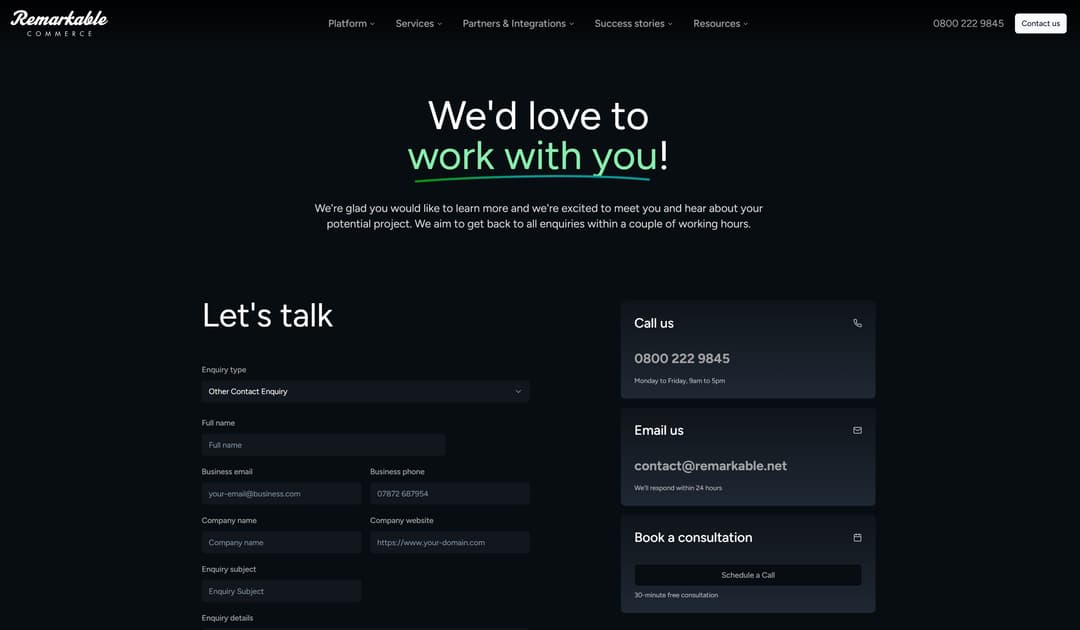
Make sure your contact information is easy to find, whether it's via a contact form, phone number, or email address. Offering multiple ways for visitors to reach you increases the chances of conversion and shows that you value customer communication.
Remarkable Commerce is a leading eCommerce platform and agnostic services agency working with lots of ambitious retail brands in the UK. We offer UX design services and are on hand to answer any eCommerce or website related questions.
